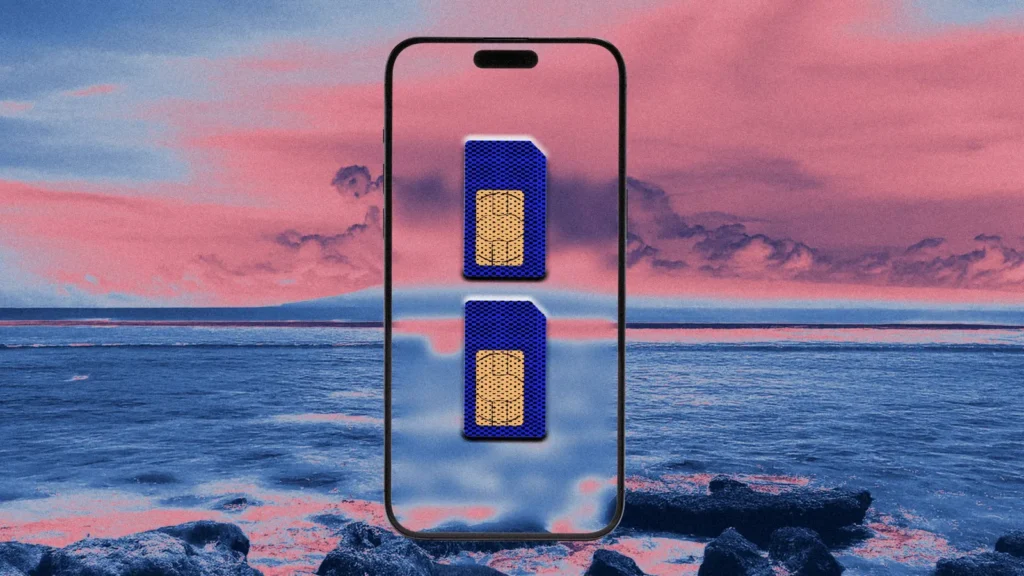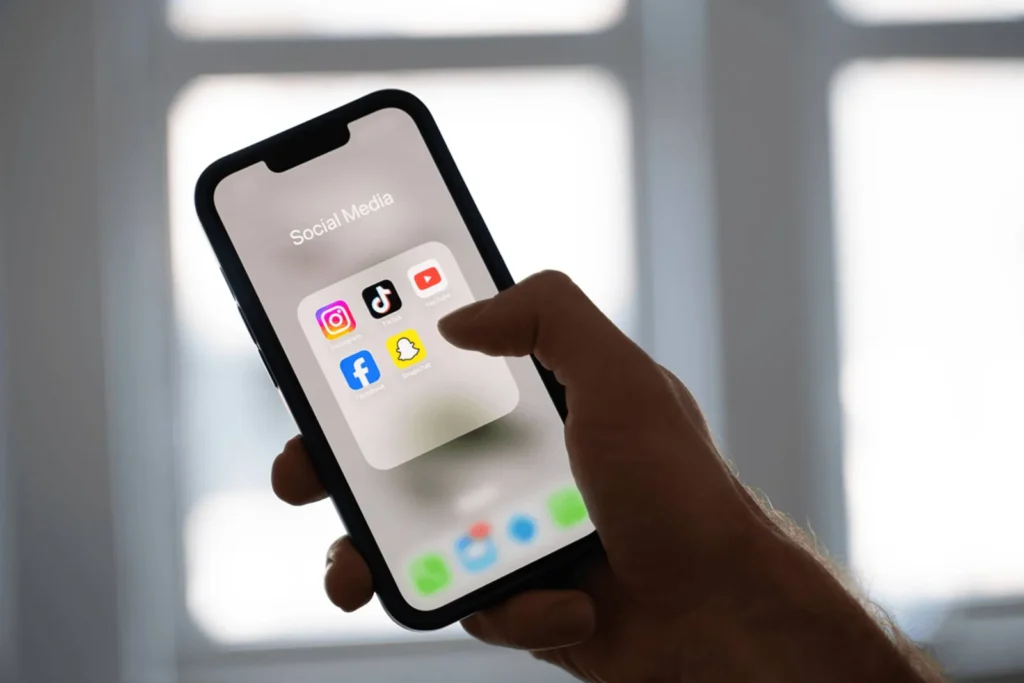Traveling is exciting—until your phone bill arrives. International roaming charges can easily drain your wallet. That’s where eSIM technology steps in. Instead of juggling plastic SIM cards, an eSIM lets you connect instantly to local or global mobile networks without visiting a store or paying inflated rates.
In this guide, we’ll break down what an eSIM is, how it works, why travelers should use it abroad, and which providers offer the best deals.

What Is an eSIM?
An eSIM (embedded SIM) is a digital version of the physical SIM card. It’s built into your device and activated through software rather than hardware.
Key Features:
- No physical card required – activated via QR code or carrier app.
- Reprogrammable chip – switch carriers without swapping SIMs.
- Multiple profiles – store several plans at once for travel and personal use.
- Universal adoption – supported by most smartphones released since 2020.
In short: An eSIM makes it possible to connect to a local or global mobile network instantly—ideal for international travel.
How Does an eSIM Work?
The setup is straightforward:
- Buy a plan from a certified eSIM provider.
- Receive a QR code or activation link via email or app.
- Open your phone settings (e.g., Settings > Cellular > Add eSIM).
- Scan the QR code or enter details manually.
- Activate the profile and start using data immediately.
⚠️ Most eSIMs can only be downloaded 3 times per device, so if you change phones, you’ll need a new voucher from your provider.
Why Do You Need an eSIM When Traveling Abroad?

Using your home SIM card abroad usually means expensive roaming fees or unreliable Wi-Fi. An eSIM changes the game for travelers.
Benefits of Using an eSIM Abroad:
- Cost savings – Avoid roaming fees with affordable local or global plans.
- Convenience – Activate before you land, no need to queue at airport kiosks.
- Dual connectivity – Keep your home SIM active for calls, while using eSIM data.
- Reliable internet – Access secure mobile data instead of risky public Wi-Fi.
- Flexibility – Switch between providers and plans instantly.
Which Devices Support eSIM?
Not all phones are ready for this feature, but most 2020 and newer models are.
eSIM-Compatible Devices (Examples):
- Apple: iPhone XS, XR, and newer; iPad Air 3+; Apple Watch Series 3+
- Samsung: Galaxy S20+, Note 20+, Z Flip/Fold series, Galaxy Watch 4+
- Google: Pixel 4 and newer
- Others: Oppo Find X, Xiaomi 12 series, Motorola Razr
👉 Check your carrier’s website to confirm compatibility before purchasing.
Best eSIM Providers for International Travel
Here are the top eSIM providers trusted by frequent travelers.
| Provider | Coverage | Best For | Highlights |
|---|---|---|---|
| Saily | 200+ countries | Privacy-focused travelers | Created by NordVPN; refund guarantee |
| Airalo | Global | Multi-country trips | Flexible gigabyte packages; simple app |
| eSim.sm | 155 countries | Long-term nomads | No data limits; pay-as-you-go option |
| Holafly | Global (US, EU, Asia) | Unlimited data users | Unlimited plans (5 days–3 months) |
| Ubigi | 40+ countries | High-speed users | 5G available; smooth for streaming/work |
eSIM vs. Roaming vs. Local SIM Cards
Here’s how eSIMs compare to traditional options when you’re abroad:
| Option | Pros | Cons | Best For |
|---|---|---|---|
| eSIM | Instant setup, affordable, no physical card | Not all phones support it | Frequent travelers |
| Roaming | No setup needed, use home number | Extremely expensive | Short trips/emergencies |
| Local SIM | Often cheapest, local number included | Must buy in person, language barriers | Long-term stays |
👉 For most short-term or multi-country trips, eSIMs strike the perfect balance.
How to Choose the Right eSIM for Your Trip

When picking a plan, consider:
- Coverage – Does it work in all the countries you’re visiting?
- Data allowance – Unlimited data vs. capped gigabytes.
- Duration – Daily, weekly, monthly, or flexible.
- Speed – 4G LTE is common; some providers now offer 5G.
- Refund policy – Useful in case of compatibility issues.
How to Activate an eSIM for Travel
Here’s a quick step-by-step activation guide:
- Check compatibility – Verify your phone supports eSIM.
- Buy your plan online – Choose from global providers like Airalo or Holafly.
- Receive QR code – Delivered instantly via email or app.
- Install profile – Open settings and scan the code.
- Set eSIM as data line – Keep your main SIM active if needed.
- Monitor usage – Use provider apps to track data consumption.
Cost Savings: eSIM vs. Roaming Fees
International roaming is notoriously expensive. Here’s a snapshot comparison:
| Usage (1 week abroad) | Roaming (US carrier) | Local SIM | eSIM |
|---|---|---|---|
| 5 GB data | $50–100+ | $10–20 | $15–25 |
| 10 GB data | $100–200 | $20–30 | $25–35 |
| Unlimited data | Often unavailable | $30–50 | $35–50 |
Takeaway: Even with unlimited plans, eSIMs often cost half the price of roaming.
Who Benefits Most From an eSIM Abroad?
- Business travelers – Secure, fast data for video calls and emails.
- Tourists – Easy maps, translations, and ride-hailing apps.
- Digital nomads – Reliable, flexible internet for long-term work abroad.
- Families – Each person can activate a separate data plan instantly.
Common Questions About eSIMs
1. Can I use an eSIM and physical SIM at the same time?
Yes—most dual-SIM phones let you keep your home SIM active while using an eSIM for data.
2. Do eSIMs support calls and texts?
Many plans are data-only, but some providers (like Airalo) offer calling add-ons.
3. Are eSIMs safe?
Yes—data is encrypted, and you avoid risks of using unsecured Wi-Fi abroad.
4. Can I keep multiple eSIMs on my phone?
Yes, though only one (sometimes two) can be active at once.
Why an eSIM Is a Must-Have for Travelers
The question “What is an eSIM and why do you need one when traveling abroad?” boils down to three things:
- Lower costs – Avoid outrageous roaming fees.
- Greater convenience – No need to buy physical SIMs.
- Better security – Safer than relying on public Wi-Fi.
Whether you’re traveling for five days or three months, an eSIM is the smarter, simpler, and more affordable way to stay connected abroad.
If you haven’t tried one yet, consider testing it on your next trip—you’ll quickly see why eSIMs are becoming the go-to choice for international travelers.










